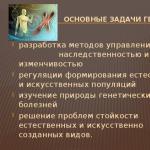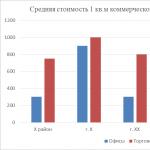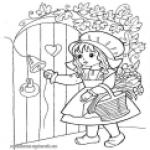Manufacturing of stepladders for trucks. Manufacturing of stepladders for springs. Transportation and storage
GOST R 51585-2000
STATE STANDARD OF THE RUSSIAN FEDERATION
AUTOMOTIVE LEAF SPRINGS
VEHICLE
General technical conditions
GOSSTANDARD OF RUSSIA
Moscow
Preface
1 DEVELOPED AND INTRODUCED by the Technical Committee TC 56 “Road Transport”
2 ADOPTED AND ENTERED INTO EFFECT by Resolution of the State Standard of Russia dated April 10, 2000 No. 97-st
3 INTRODUCED FOR THE FIRST TIME
GOST R 51585-2000
STATE STANDARD OF THE RUSSIAN FEDERATION
LEAF SPRINGS FOR AUTOMOBILE VEHICLES
Are common technical specifications
Leaf springs of motor vehicles. General specifications
Date of introduction 2001-01-01
1 area of use
The standard applies to steel small-leaf and multi-leaf * springs and their elements of automobile vehicles (ATS): cars, buses, trolleybuses, trailers and semi-trailers.
* Few-leaf springs are made from sheets of variable longitudinal profile, multi-leaf springs are made from sheets of constant longitudinal profile.
2 Normative references
F OS , daN or settlement deformationF OS , mm;bending boom under control loadH k, mm;
spring stiffness at test load C, daN× cm -1 ;
spring length L, L', mm (figure);
length of the front end of the spring (for asymmetrical springs)L A, mm;
hardness of sheets after heat treatment, HB.
Reference parameters:
spring width b, mm (figure);
width of spring ends, mm;
package height T, mm (figure);
spring bending arrow at no loadH 0 , mm;
deflection under control loadf k, mm;
deflection under load settlementf os, mm.
Picture 1
3.2 Springs are manufactured in widths of 45, 55, 65, 75, 90, 100, 120 mm, the preferred sizes are 65, 75 and 90 mm.
3.3 Dimensions of the internal diameter of the metal ear bushingsd V (Figure) except for bushings designed to work in conjunction with rubber bushings and bushings of special design are shown in the table. The tolerance on the internal diameter of these bushings is no more than IT 11 according to GOST 25346.
The roughness parameter of the inner surface of the processed metal bushings of springs and associated pins should be no more thanRa= 2.5 microns according to GOST 2789.
Table 1
|
Dimensions, mm |
|||||
|
Spring width b |
|||||
|
Inner diameter of ear bushings d V |
|||||
|
Note - The dimensions indicated in brackets are not recommended. |
|||||
3.4 The tolerance on the internal diameter of twisted lugs (Figure) with machined holes should not be more than IT11, and for the diameters of lugs with an untreated surface, the deviations should not exceed 0.5 mm or ±0.25 mm.
3.5 The dimensions of the center bolts and clamps are given in appendices and.
4 Technical requirements
4.1 Finished springs and their elements must comply with the requirements of this standard and be manufactured according to design documentation approved in in the prescribed manner. Springs must be made of hot-rolled spring steel in accordance with GOST 14959 or technical specifications(TU) for steel, approved in accordance with the established procedure. It is recommended to use vanadium-containing steels.
4.2 Two classes of springs are installed:
1st - from high-precision rolled strip of high-quality spring steel for springs of cars, buses, trolleybuses;
2nd - from a rolled strip of normal or increased precision for springs of trucks, trailers and semi-trailers.
Springs for buses and trolleybuses, manufactured using spring sheets from trucks, may be manufactured according to class 2.
4.3 Sheets must be heat treated.
The hardness of the sheets should be 363 ... 444 HB. In this case, the permissible difference in the hardness values of all spring sheets, specified in the design documentation, should not exceed 65 HB. In the case of using special types of heat treatment (for example, high-frequency heat), the hardness must comply with the requirements of the design documentation.
4.4 The surfaces of heat-treated sheets, including their edge sides, the edges of the ends of the sheets, the edges of holes punched in the sheets, must be free of delaminations, cracks, cavities, cold nicks, notches and undercuts in places where the sheets were mechanically processed and other mechanical or metallurgical defects origin, reducing the durability of the spring.
In agreement with the design documentation developer, single chips up to 20 mm long from the end of the sheets (except for the main sheets) to the width of the flange of asymmetrical profiles are allowed.
4.5 The surfaces of spring sheets working in tension are subjected to surface hardening (shot peening, etc.). It is recommended to subject sheets of small leaf springs to shot peening in a stressed state.
4.6 The depth of the total decarburized layer (ferrite + transition zone) of heat-treated sheets should not exceed the permissible depth of the decarburized layer of rolled springs before heat treatment according to GOST 14959. It is allowed to increase the depth of the decarbonized layer in places subject to secondary heating. For sheets made of vanadium-containing steels, it is allowed to reduce the carbon content in the surface layer (1.5% of the sheet thickness) by no more than 20%, its content in the core and the content of fine-grained tempered martensite or trostomartensite by no less than 80%.
4.7 The crescent shape of heat-treated sheets (Figure) should not exceed the values given in GOST 7419.
Figure 2
4.8 To reduce crescent shape, cold straightening of heat-treated sheets with a length of more than 800 mm is allowed, provided that the required durability of the springs is ensured, determined during bench life tests.
4.9 The nominal diameter of the center hole must exceed the nominal diameter of the center bolt by no more than 0.5 mm. Deviations in the dimensions of the hole along the smallest diameter should not exceed 0.5 mm, while the operation of making a center hole (stamping, etc.) begins from the side of the sheet stretching surface. On the side of the stretching surface of the sheet, it is recommended to make the hole with a radius of curvature of 2 - 4 mm or with a chamfer of 1 - 2 mm.
4.10 The maximum deviations of the center hole and fixing extrusion from the longitudinal axis of symmetry of the spring leaf should not exceed 1 mm for a sheet width of 90 mm inclusive and 1.4 mm for 100 mm or more. Extrusions intended for fixing sheets in the central part of the spring must not have a deviation from the longitudinal axis of symmetry of the spring sheet of more than 1 mm. If there are two extrusions, the sum of their deviations in different directions from the longitudinal axis of the sheet is no more than 0.3 mm.
Deviations in the length of sheets with drawn ends are established in the design documentation.
4.14 Fastening the bushings in the spring ears must prevent their rotation and axial displacement relative to the ears during operation.
4.15 Tolerances of perpendicularity to the axis of the spring ear with a pressed bushing, measured at a distance of 250 mm from the longitudinal plane of the spring, should not be more than 3.0 mm in the horizontal plane and 4.0 mm in the vertical plane (Figure ).
For special types of heat treatment, the precipitation load is set in the design chamber.
4.19 Before assembling the springs, one of the rubbing adjacent surfaces of the sheets is lubricated with graphite lubricant in accordance with GOST 3333. When using a special anti-corrosion coating on sheets or spacers between them, the surfaces of the sheets may not be lubricated.
1.2 - with a nominal sheet thickness of up to 8 mm inclusive;
2.0 » » » » St. 8 to 16 mm inclusive;
2.8 » » » » 16 mm.
For sheets of different thicknesses, the nominal value is considered the smallest value.
The gap should gradually decrease as it moves away from the middle of the length. With a gap length of up to 75 mm, its ends are determined with a 0.05 mm feeler gauge or against the light; for lengths over 75 mm - with a 0.3 mm feeler gauge.
The gap between the fender (overlay) and the main sheets, as well as in the area where the overhead eye is attached, is set in the design documentation.
4.22 The leaves of small leaf springs must touch only at the central fastening through spacers (if any) and at the working ends. In the rest of the spring, the gap between the sheets for any deformation must be at least 1 mm.
For springs of the 2nd class and springs of the 1st class with drawn ends, it is allowed to increase the deflection of the deflection boom under the control load to ±10 mm, subject to subsequent sorting of the springs into two size groups. The difference in the spring bending values under load in each group should not exceed 10 mm. Installation of springs different groups on the same PBX is not allowed.
Springs supplied only as spare parts may not be sorted into groups.
4.25 To protect against corrosion, springs are painted in accordance with the requirements of GOST 7593.
For passenger car springs designed after 01/01/2001, sheet-painting is recommended.
Small leaf springs must be leaf-painted.
4.26 Apply to each spring:
Trademark of the manufacturer;
Technical control mark;
Designation of size group (if available);
Issue date (month and year);
Mark of conformity (when supplied as spare parts) according to GOST R 50460.
The place of branding and the method of designating size groups are determined in the design documentation. It is recommended to carry out the branding on one of the spring clamps.
1 - limit position of the probe; 2 - dipstick
Figure 4
4.27 The resource of the springs must correspond to the service life of the vehicle up to overhaul when operating under conditions of the first category of operation according to GOST 21624. In the absence of a major overhaul of a complete automatic telephone exchange, the service life must be at least 50% of its full service life.
The criterion for the limiting state of a spring is a three-time replacement of sheets for a multi-leaf spring and a one-time replacement for a few-leaf spring, as well as subsidence (a non-recoverable decrease in the control arrow of the spring deflection) by more than 20% of the spring deformation when the load changes from static to maximum (Appendix).
5 Types of control and testing
5.1 Springs are subjected to the following types of control and testing:
Acceptance control;
Definitive and periodic life-saving bench tests;
Certification tests;
Incoming quality control.
5.2 Acceptance control for compliance with the requirements of this standard and design documentation
5.2.1 Complete inspection checks for completeness, correct assembly, quality of locking of threaded connections, absence of mechanical damage, condition protective coating and the presence of lubrication.
5.2.2 Selective control checks the linear dimensions, hardness of the sheets, thickness of the decarburized layer, quality of surface hardening (shot peening, etc.) and deformation during control upsetting, perpendicularity of the axis of the spring ear with the pressed-in bushing of the longitudinal axis of the spring in the transverse direction, gaps between the sheets. The sample volume is established in the design documentation for specific springs.
5.3 The scope and frequency of definitive and periodic life-cycle bench tests are given in the Appendix.
5.4 When conducting certification tests, springs of the same standard size are presented in quantities of at least 3 pieces. and KD.
The springs are subjected to external inspection and their dimensions and load characteristics are controlled.
In this case, the following geometric dimensions are checked:
Length of the spring and front end (for asymmetrical springs) ( , , );
Offset of sheets in the middle part and at the ends ();
Gaps between sheets and at the ends of sheets ( , );
Ear diameters.
The following load characteristics are determined:
Residual deformation ();
Spring bending arrows under control load ();
Spring stiffness ().
5.5 The consumer carries out incoming quality control of incoming batches of springs for compliance with the requirements of this standard in accordance with GOST 24297. For external inspection, measurement and testing, a sample of 1% is made from a batch of springs (but not less than 5 pieces). At least 10% of the sheets of selected springs are subjected to a control test for hardness, and to check the depth of the decarbonized layer - 4%. (but not less than 3 pieces).
5.6 If at least one spring from the number of springs selected for testing does not comply with the requirements of this standard, a re-test is carried out on a double number of springs from the controlled batch. The results of the re-inspection are final and apply to the entire batch.
Note - The party is considered:
The manufacturer has the number of springs of the same name (manufactured according to the same drawing), simultaneously presented for control;
The consumer has the number of springs of the same name (manufactured according to one drawing), simultaneously received from the manufacturer according to one shipping document.
6 Control and test methods
6.1 Correct assembly, completeness, absence of mechanical damage, quality of paintwork, as well as the presence of stamps and markings are checked visually, quality paint coating- visually, by comparison with a control sample approved in the prescribed manner, or in accordance with GOST 7593.
6.2 Linear dimensions are controlled by means of linear measurements with maximum permissible errors established by GOST 8.051.
6.3 Tightening torque threaded connections must be checked with a torque wrench.
7 Transportation and storage
7.1 Transportation and storage conditions must ensure the safety of the springs. Springs of different types must be separated when transported together.
7.2 Terms and conditions for storing springs at the consumer - in accordance with GOST 15150.
8 Operating instructions
Operation and care of springs is in accordance with the operating manual of the vehicle on which they are installed.
9 Manufacturer's warranty
The manufacturer guarantees that the springs comply with the requirements of this standard provided that the consumer complies with the conditions of transportation, storage and operation.
The warranty period for the operation of the springs must correspond to the warranty period for the operation of the vehicle for which they are intended.
APPENDIX A
Spring center bolt dimensions
A.1 Center bolts are made with a cylindrical head. The diameter of the center bolt must correspond to the figure and table.
Notes
1 It is allowed to use center bolts with hex head. The bolt dimensions are according to GOST 7796, and the diameter d- according to the table.
2 It is allowed to use center bolts with flats. The dimensions of the bolts and holes for them are established in the design documentation.
Figure A.1
Table A.1
In millimeters
|
Spring width b |
L 0 |
Minimum length l at |
|||||||
|
Hex nut according to OST 37.001.124 |
|||||||||
|
T ** + 10 |
|||||||||
|
* Tolerance h13. ** T- thickness of the sheet package. Note - X And u- according to the drawing. |
|||||||||
1 and GOST 10549.
APPENDIX B
Types and sizes of spring clamps B.1 Dimensions IN, 1 b Andh
spring clamps made from rolled rectangular profiles must correspond to those shown in the figures and tables and.
B.3 The dimensions of spring clamps for passenger cars and small buses are established in the design documentation. It is allowed to install rubber (plastic) clamp gaskets.
Type A
In millimeters
|
Spring width b |
Table B.1 |
|||||||||||
|
T ** + 10 |
||||||||||||
|
Bolt diameter ** * Used for springs designed before 01/01/90. T - |
||||||||||||
thickness of the sheet package.
Type B
In millimeters
|
Table B.2 * 1 ± 2 |
|
|
T(18 - 25) |
|
|
Table B.2+ (22 - 28) |
|
|
Table B.2 + (25 - 32) |
|
|
Table B.2 + (30 - 36) |
|
|
Table B.2 + (34 - 40) |
|
|
T+ Table B.2 Note - Other sizes are according to the table. |
|
* - thickness of the sheet package.

Figure B.1
Figure B.2
Figure B.4
APPENDIX B
(required) Methodology of bench identification and periodic tests life tests
springs
B.1 Types and scope of tests
Figure B.1
Note - Failure is considered to be a sheet breakage or spring sagging (decrease in arching) by more than 20% of the spring deformation when the load changes from static to maximum ().
B.1.2 Periodic life tests of springs are carried out for the purpose of periodically checking compliance with the minimum and 50% life obtained during definitive life tests.
B.1.3 Before testing, determine the elastic characteristic of the spring - the relationship between the load acting on the spring and its deformation.
B.1.4 Definitive life tests are carried out by the enterprise that produces mass-produced springs within no more than 1.5 years after the start of production using the basic technology and is repeated at the request of the enterprise that develops the design documentation or the consumer in case of changes in the design or technology.
The resources determined by are agreed upon with the company that develops the PBX.
B.1.5 Periodic life tests are carried out by the enterprise that manufactures the springs at least once every 6 months.
It is allowed to carry out definitive and periodic tests at the design development company.
B.1.6 The following minimum number of mass-produced springs to be tested is established, pcs.:
15 - for determining life tests;
3 - for periodic life tests.
B.1.7 For springs manufactured in small quantities, the scope of testing is established by agreement of the parties.
B.2 Equipment and instruments for testing
B.2.1 Stands for definitive and periodic life tests, consisting of:
A mechanism that ensures cyclic deflections of springs;
Spring loading mechanism to create preliminary deformation;
Devices for cooling springs with air;
Cycle counter.
B.2.1.1 The devices and instruments used must have the following parameters:
Stroke setting accuracy ±1 mm;
The cycle counter capacity is at least 1 million cycles.
B.2.1.2 The power of the stand and the range of possible strokes and frequencies are selected depending on the type of springs being tested.
B.2.2 Installation for determining the elastic characteristics of a spring
B.2.2.1 The installation consists of a press that loads the spring to the value R With compliance with requirements.
B.2.2.2 The installation must have deformation and load measurement systems that provide measurement accuracy of ±1%.
B.3 Definition of test mode
B.3.1.1 Before determining the elastic characteristics, the spring is settled in accordance with the requirements of the design documentation.
B.3.1.2 The elastic characteristics of the spring are determined without embedding with stepladders and with embedding.
The test diagram on moving carts is shown in Figure. If there is a sliding end, the carts are rigidly connected to each other with a rod 1 . Rod lengthL w equal to the distance between the brackets in a real suspension. For springs with sliding ends (lower diagram in the figure), a rigid fastening in the center is recommended.
When determining the characteristics of a spring, the maximum load is considered to be the load that causes deformation of the spring corresponding to the moment the spring travel limiters are turned on in the suspension of the base model of the vehicle. For solid rubber stops, their inclusion is determined by a deformation equal to 1/3, and for hollow ones - 2/3 of the height.
In the absence of limiters, the maximum load is determined by the value of spring deformation equal to 1.5 spring deflection under static load.
The above data is provided by the company that develops the automatic telephone exchange.
B.3.1.5 Spring deformation is measured both during loading and unloading.
B.3.1.6 Based on the test data, construct a graph of the elastic characteristic of the spring (Figure), on which, in a section of ±25 mm from the deflection corresponding to the static load, between the load and unloading lines, draw a middle line corresponding to the elastic characteristic of the spring in the absence of friction.
1 - rod; WITH- hardness, daN× cm -1
Figure B.2
B.3.2 Determination of the regime of definitive and periodic life tests
Stand progress S,equal to twice the amplitude of spring deformation;
Minimal spring deformationf P (spring preload), equal to the difference between the spring deformation under static loadf c and amplitude of spring deformationS/ 2 .
B.3.2.2 The deformation of a spring under a static load is determined from the elastic characteristic of a spring with embedding as the distance from the ordinate axis to the point of intersection of the middle line of the elastic characteristic with the horizontal line corresponding to the static load.
B.3.2.3 Stand progress Sdetermined from the conditions that the amplitude of stress changes s a when testing multi-leaf springs embedded, it is equal to ±3000 daN× cm -2 . Multi-leaf springs whose tension under static load is less than 3000 daN× cm -2 are tested in a pulsating cycle, i.e. at zero tension in the spring and amplitude 3000 daN× cm -2 .
When testing small leaf springs, a stress amplitude of ±4500 daN is allowed.× cm -2 .
For springs whose tension under static load is more than 6000 daN× cm -2 , the voltage amplitude during testing may be reduced in agreement with the company that developed the telephone exchange.
Stand progress Scalculated by the formula
where is the change in stress when the spring deflects by 1 cm, daN× cm -3 ;
WITH 3 - stiffness of the spring in the seal under static load, daN× cm - ;
TO -coefficient depending on the design of the spring.
For semi-elliptical asymmetrical spring
![]()
for semi-elliptical symmetrical spring B.3.1.7), daN × cm -1 .
B.4 Preparation and conduct of tests
B.4.1 Installing the spring on the stand
B.4.1.1 The spring is installed in the same way as when installing it during tests to determine the elastic characteristics with embedding with stepladders ().
B.4.1.2 The spring assembly conditions must comply.
B.4.1.3 The forces from the stand slider to the spring embedment are transmitted by:
For asymmetrical springs and springs with different designs ends - through a bearing device (load rod, rolling bearings, etc.), providing angular movement of the spring;
For symmetrical springs with the same design of the ends, rigid attachment to the slider is allowed.
B.4.1.4 The spring installed on the stand is subjected to preliminary deformation - preloading of the spring ().
B.4.2 During definitive life tests of springs, spring sag is measured every 100 thousand cycles.
During periodic life tests, subsidence is also measured for springs that have been tested to minimum and 50% life.
B.4.3 During periodic life tests, the spring is considered to have passed the test if no failures were observed before the minimum life.
B.4.4 The results of periodic testing of springs up to 50% service life are reported to the developer.
B.5 Processing of test results
B.5.1 The results of definitive life tests are recorded in a protocol, the recommended form of which is given below.
The protocol indicates:
Number of cycles before failure;
Numbers of broken sheets;
Distance from the center of the sheet to the point of breakage;
Distance from sheet edge to center fatigue crack;
The location of the fatigue crack on the tensile or compression surface;
The presence of contact friction at the site of the breakdown;
Spring sag (data from all measurements).
B.5.2 After conducting definitive life tests and processing the results, a report is drawn up containing:
Test object;
Elastic characteristics of springs without embedding;
Elastic characteristics of springs with sealing;
Test mode;
Test data;
Results of metallographic research (the scope of research is determined by the person conducting the research);
Results of studies to determine the causes of failure;
Analysis of test results - determination of minimum and 50% resources;
Conclusions and offers.
|
Protocol No._________ Spring type and drawing number _________________________________________________ Length _______________ width ______________ number of sheets ____________________ Sheet thickness and profile type ________________________________________________ Date of manufacture and batch number _____________________________________________ Date and place of testing ______________________________________________________________ Stand stroke _______, spring preload ___________ and stand oscillation frequency Tightening torque for stepladder nuts, daN× m __________________________________________
Conclusion (90% resource, minimum resource, 50% resource) ___________________________________________________________________________ ___________________________________________________________________________ Responsible for determining the minimum resource ____________________________ Initials, surname Responsible for testing ___________________________________________________ Initials, surname |
|||||||||||||||||||||||||||||||||||||||||||||||
B.5.3 The results of determinative life tests are presented graphically in a probabilistic Weibull distribution grid (Figure ). The number of cycles until the first failure of the springs (leaf breakage, sagging of the spring) is plotted along the abscissa axis; the probability of no failures corresponding to the percentage of unbroken springs for a given number of cycles is plotted along the ordinate axis.
To construct a graph, data on the service life of the tested springs is written out from the test report in ascending order (table).
Table B.1
|
Spring serial number |
|||||||||||||||||||||
The percentage of unbroken springs (probability of failure-free operation) is determined by the dependence
![]()
Where P- number of tested springs;
n i- number of broken springs.
For example, if 15 springs are tested ( P= 15), then if the fifth spring breaks (n i = 5)
![]() = = 69.5%, i.e. probability of failure-free operation up to 201 thousand cycles of the remaining 10 springs ( P
-
n i) will be equal to 69.5%.
= = 69.5%, i.e. probability of failure-free operation up to 201 thousand cycles of the remaining 10 springs ( P
-
n i) will be equal to 69.5%.
Thus, 15 points are plotted on the graph.
A straight line is constructed from the points obtained. If it is necessary to clarify the position of the straight line, a regression equation is used.
To determine 90% and 50% resources, horizontal lines are drawn corresponding to 90% and 50% probability of no breakdowns.
The distances in cycles from the ordinate axis to the points of intersection of horizontal lines with a straight line drawn through the points are equal to 90% and 50% resources. The minimum resource is 0.75 90% resource.
For example, in the figure, the minimum resource is 112.5 thousand cycles, 90% resource is 150 thousand cycles, 50% resource is 220 thousand cycles.
B.5.4 After periodic life tests are carried out, a report is drawn up based on their results. All springs that fail the test are subjected to metallographic examination. Metallographic research data, an analysis of the reasons for the insufficient resource and proposals for measures to increase it are attached to the act. After taking measures to improve the quality of springs, periodic tests are repeated.
Keywords:leaf springs, automobile, vehicles, safety requirements, parameters and dimensions, testing, transportation and storage, operating instructions
Pickup. Pickup of products is carried out in cities where our branches are present: Ekaterinburg, Perm, Chelyabinsk, Ufa, Chusovoy (Perm region) and is carried out on the basis of 100% prepayment of the order cost.
Delivery transport companies. Delivery of orders by transport companies is carried out to all cities of the Russian Federation in which there are terminals of transport companies and is carried out on the basis of 100% prepayment of the order cost.
Delivery of orders by transport companies (hereinafter referred to as TC) is carried out as follows:
- You place an order on the website or by phone.
- The online store manager will contact you to clarify the order data: name, quantity and availability of goods; preferred transport company; contact details. After clarifying the information and in the absence of disagreements, the manager accepts the order for work and issues an invoice for payment.
- You pay for the order using the selected payment method.
- Once payment is received, the order is sent for packaging. The manager contacts you and informs you about this, in addition, he informs you of the approximate time for delivery of the goods to the TK terminal.
- The completed goods are transferred to the terminal of your chosen shopping center for subsequent shipment. The online store manager tells you the number of the forwarding receipt from the shipping company, which you can use to track the cargo.
- Upon arrival of the order at the TC terminal of the destination city, a TC specialist contacts you by contact phone number and informs you about the arrival of your order, offers to pick up the cargo by pickup from local branch TK or specifies a convenient time for delivery “to your door”.
You independently pick up the order from the local TK branch at a time convenient for you, within the storage period, or the TK courier delivers the order and documents “to your door” at your address.
The cost of transporting an order by a transport company to the destination city depends on the tariffs of the selected transport company, as well as on the remoteness of the destination and is paid by the buyer independently at the time the order arrives in the destination city.
Delivery to the TK terminal is free. TD Delta LLC independently delivers cargo to TC terminals.
In case of urgent shipment of cargo by transport companies, the cargo transport company collects the cargo from our warehouse at the expense of the buyer (in agreement with the manager of the online store).
We usually ship our orders using the following transport companies:
TK KIT (GTD or Sperm Whale) https://gtdel.com/
Business Lines https://dellin.ru/
PEC https://pecom.ru/
RATEK http://rateksib.ru/
ENERGY https://nrg-tk.ru/
And others.
Springs are an important element of any design vehicle, ensuring stability and smooth running of the car even on uneven road surfaces, as well as guaranteeing the safety of the driver and his passengers.
A very important role in traffic safety is played by spring ladders, through which springs are secured to vehicle axles. When a car moves, all shocks from a rough road are first damped by the car's wheels. Then the vibrations of the vehicle's axles are transmitted to the springs and other suspension elements. In fact, the spring ladders are constantly under dynamic loads. And if you don’t follow this simple, but important detail suspension, then sad consequences are possible in the form of spring separation from the bridge.
Therefore, when maintenance vehicle, it is necessary to periodically tighten the nuts on the spring ladders. This is best done on a loaded machine. In this case, the springs are straightened under load and tightening the nuts on the stepladders is easier and more correct.
When installing new stepladders, you must first tighten the nuts completely until they stop and then loosen them a little. It is impossible to tighten the nuts all the way, as this will lead to damage to the fastening of the eye and stepladder.
The spring ladder is an inexpensive and common part in auto shops. But sometimes, in the case of imported trucks and semi-trailers, such a spare part may not be available. In this case, custom-made spring stepladders can help.
Spring ladders, like body ladders, must be made of a material that matches the loads that the ladder will experience. It should not deform or break during vehicle operation. At the same time, the thickness, shape of the edges and bends of the stepladder bars may differ from car to car. You can’t just pick up a stepladder from another car.
Many truck drivers try to strengthen the stock springs with additional leaf springs. In this case, the length of the rods of a standard stepladder is not enough to cover the thickened spring. Once again, custom-made stepladders come to the rescue.
In the meantime, for clarity, we will present you with approximate prices for standard analogues of stepladders, made to order. After all, even standard parts cannot always be purchased quickly, especially for imported trucks. The car must drive, work and bring profit to the owner! Therefore it is easier for a short time to make a high-quality stepladder than to wait for weeks to order it in a spare parts store.
Our company CTG-parts has been producing and equipping cars of any brand with spring stepladders for several years. We manufacture stepladders for front and rear springs and guarantee their quality.
At first glance, it may seem that a stepladder for a spring is a completely simple and unnecessary part, but it cannot be called just a bent metal rod with a thread, and it is not so easy to produce it.
The dimensions of this part are designed so that you can rest assured of the required load characteristics.
By installing a spring, you don’t have to worry about traffic safety on uneven, bumpy roads. It ensures safety when transporting vehicle passengers and makes the vehicle more resistant to vibrations. When manufacturing the part, the so-called cold metal forming method is used, thanks to which our stepladders will serve you for many years. We closely monitor every stage of production and ensure compliance technical standards and standards. The thread on the stepladder is cut with highest precision, and the nut is made higher to ensure maximum fastening.
Our company produces stepladders for any car model, and you can also order the production of exclusive stepladders according to your sizes. Why should you order a stepladder from us? Yes, because our company website has long been a leading enterprise that provides a guarantee and guarantees the quality of supplied spare parts (both domestic and imported) throughout Russia.
Among other things, we guarantee:
- high quality our products
- fast delivery
- complete set
- the largest possible range
- unique approach
- low prices
- service warranty period
- ease of ordering

Springs have a direct impact on the safety of vehicle movement, so they must be carefully looked after: lubricate the spring and leaf fastening pins, check the fastening of the part to the car body, strengthen the bolt connection from time to time, and tighten the stepladders.
On our website you can find a stepladder with reinforced springs starting from 100 rubles. All spring ladders are made of high-strength steel. If something happens, our consultants on the website will be happy to answer all your questions and help you choose the right part model for you. We have stepladders for the entire UAZ line, for buses and trucks, for Mercedes-Benz, LIAZ and Scania.
We are also ready to provide assistance to customers who are faced with the need to make a rare or discontinued stepladder. Our specialists will be able to produce it if you provide a sample of the part or exact dimensions.









